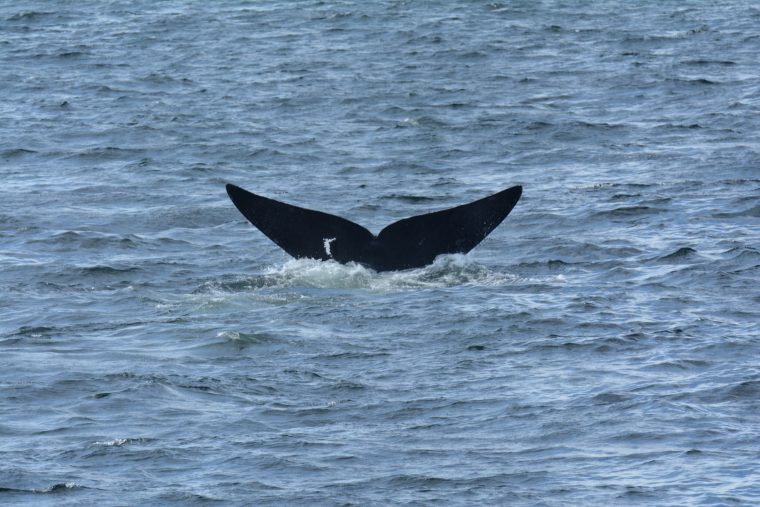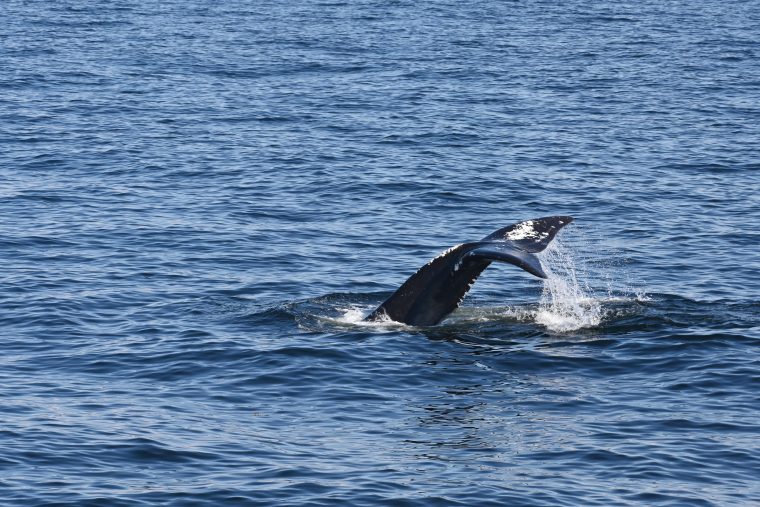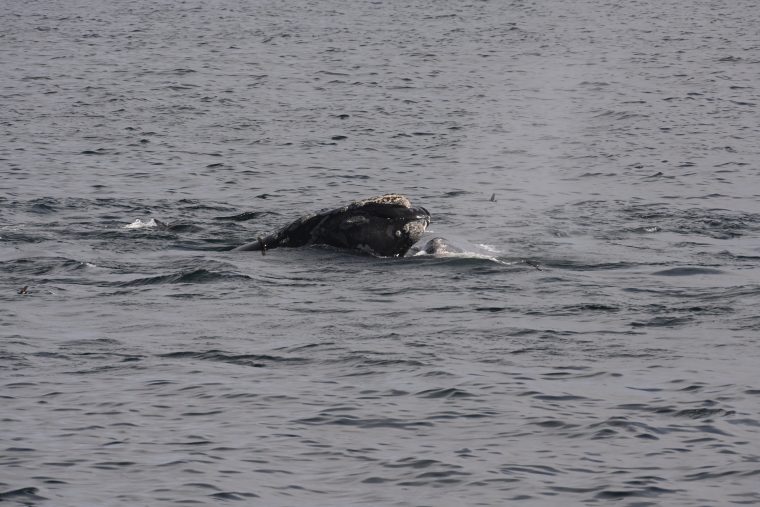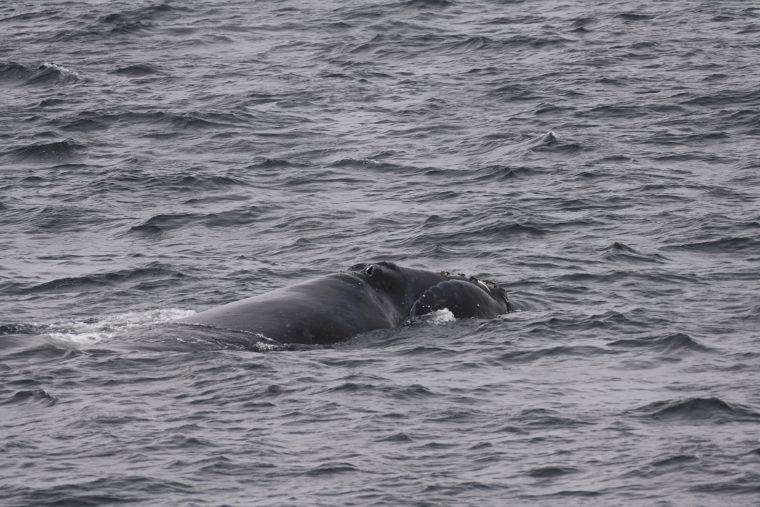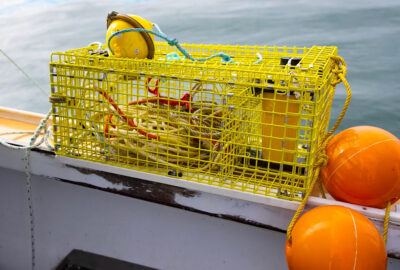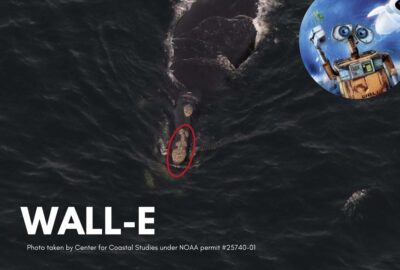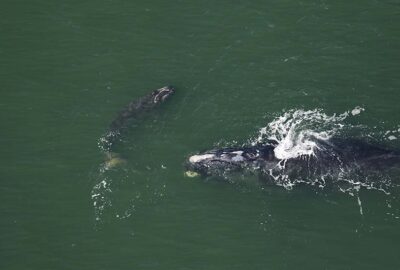Right Whale Research in the Gulf of St. Lawrence
This was our seventh year of North Atlantic right whale research in the Gulf of St. Lawrence!
By New England Aquarium on Friday, July 08, 2022


Meet our right whale researchers on the water for our second summer research cruise!
Our scientists planned to continue to identify right whales in the Gulf of Saint Lawrence and collect biopsy and poop samples. As it had been a few weeks since our first researchers were out on the water, our second set of scientists were interested in the location of the whales (have they moved?) and whether there have been any detectable changes in their health.
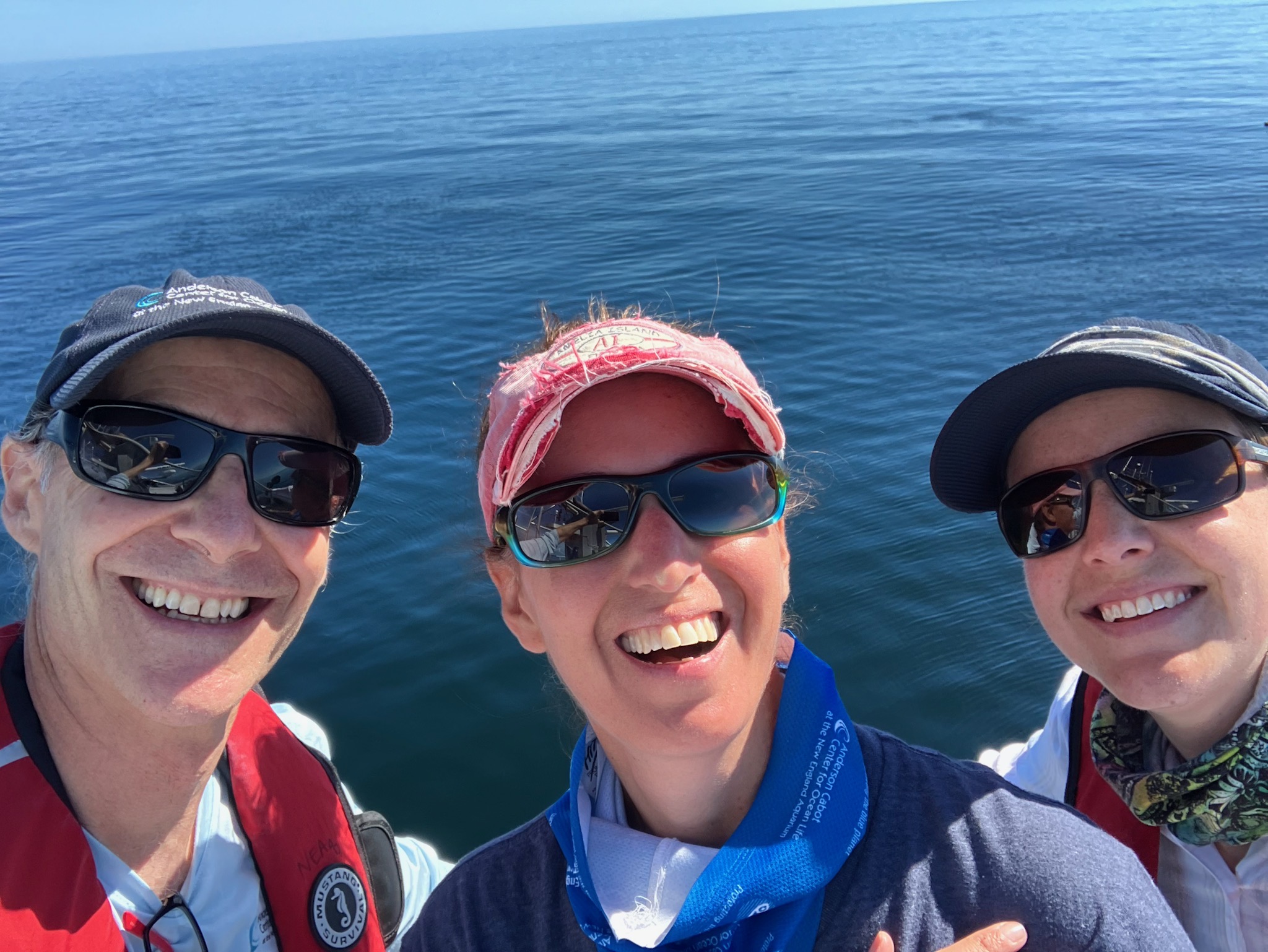
See updates from the team on the water below!
Cruise 3: August, Part 3
Updated September 21, 2022
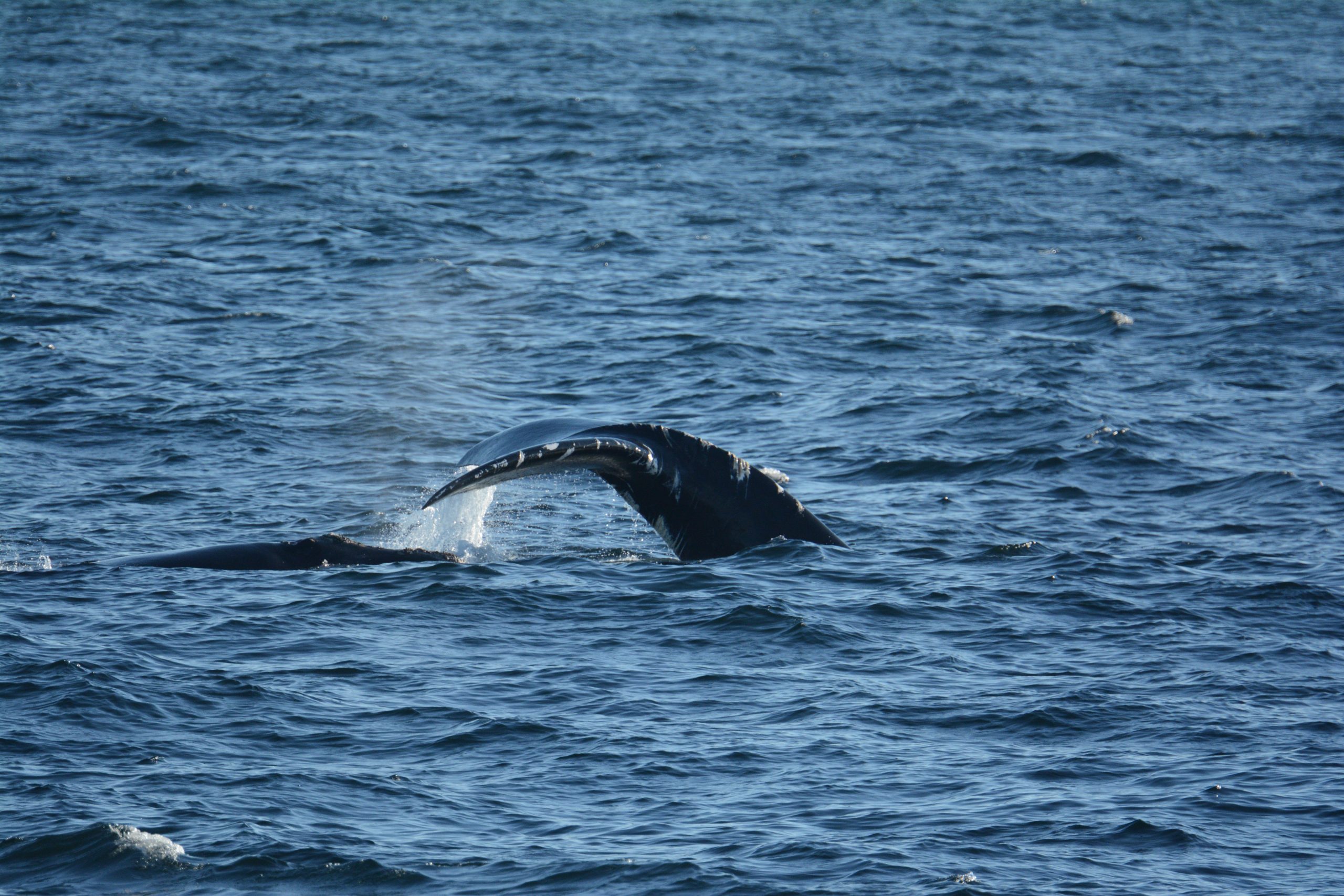
We returned to the Shediac Valley for our final two days on the water, and it seemed as though the whales had decided to do the same. We photographed over 30 individual right whales in two days, with many more in the area. An aerial survey flown in the same area the day before found only three right whales, which underscores the importance of vessel-based surveys for understanding right whale distribution.
Our first sighting was of a mom and calf pair, “Arpeggio” (Catalog #2753) and her 2022 calf, who had not been seen during the July cruise—very interesting to see the turnover of whales in this region!
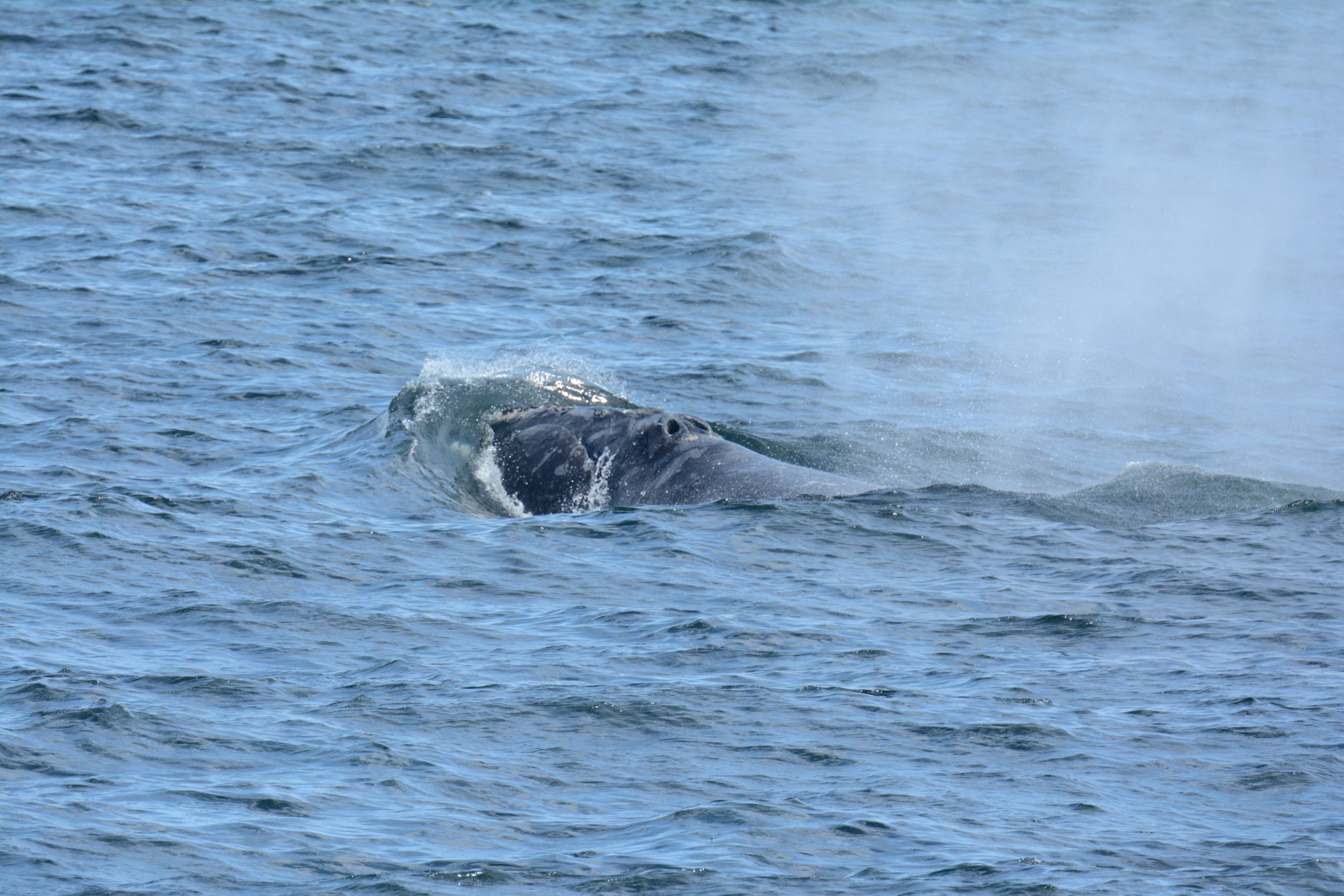
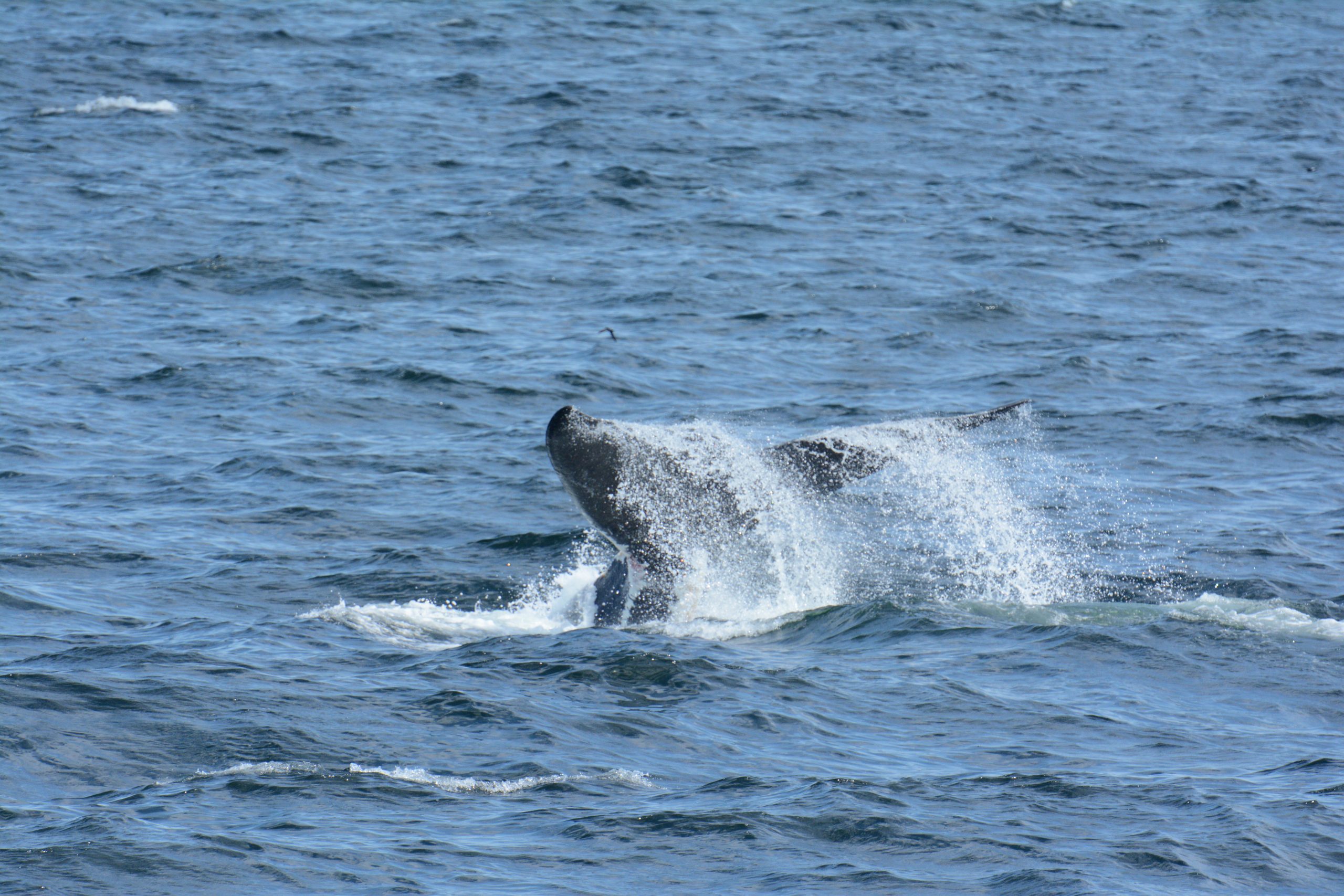
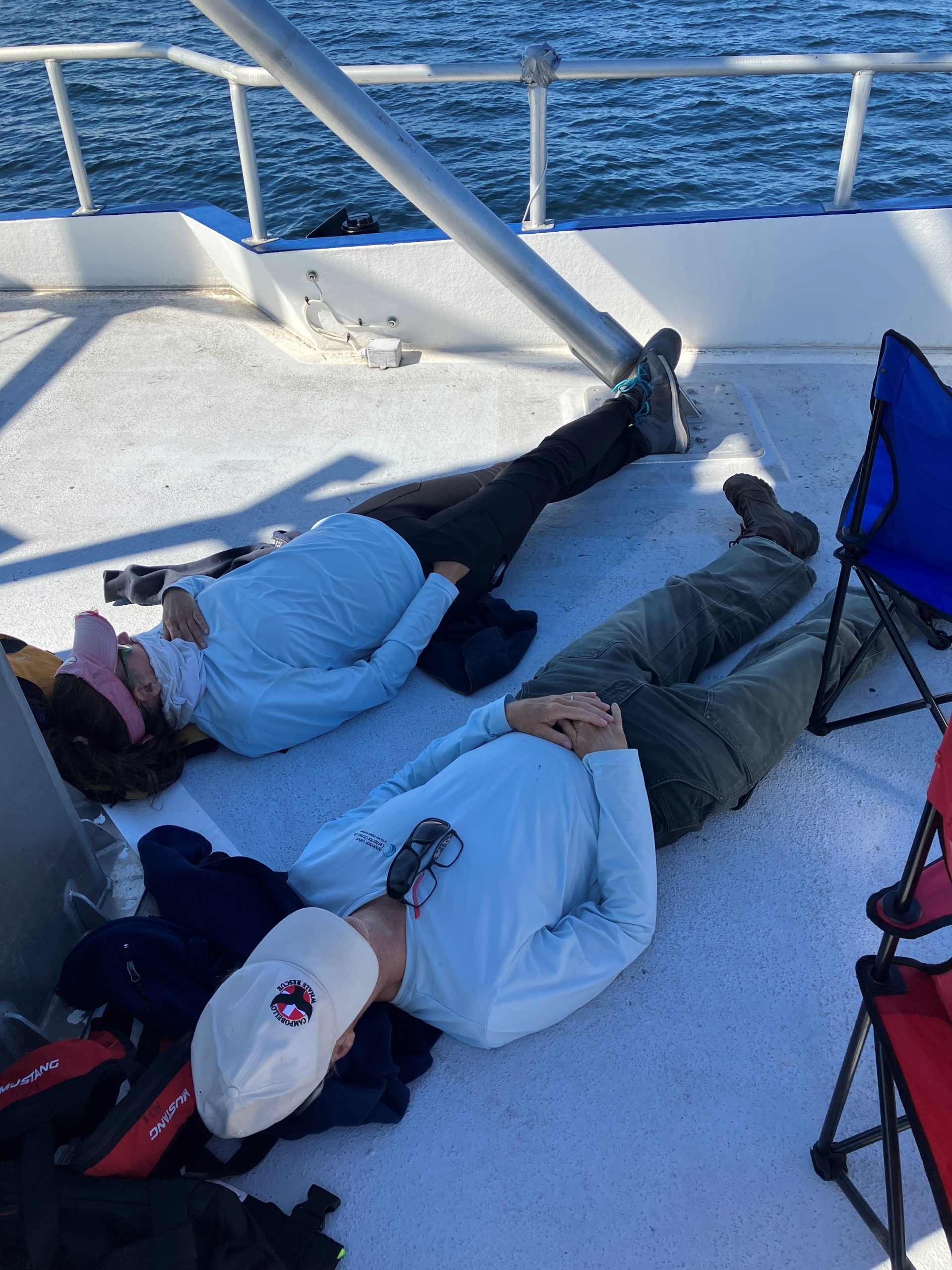
We also had an unusual sighting on our last day of a racing-diving individual, charging through the waves at the same speed as our vessel. This whale was identified as Catalog #3942, a 13-year-old female. Typically racing-diving is a behavior exhibited by males racing towards a mating group, so to see a female exhibiting this behavior reminds us that there is still so much to learn about this species.
The final two days kept us very busy with photographing and identifying whales, as well as assisting our collaborators with their drone work and distance sampling; when we had a few minutes between stations, we made the most of our downtime: weather updates, naps, hydrating, etc. While we are sad to say goodbye to the Gulf and the right whales, we are thankful to have had so much time with these special individuals. Now it is time to deliver samples to their respective labs, return our gear to storage, and begin processing all of the data that was collected this season.
Au revoir, Gulf of Saint Lawrence!
Cruise 2: August, Part 2
Updated September 13, 2022
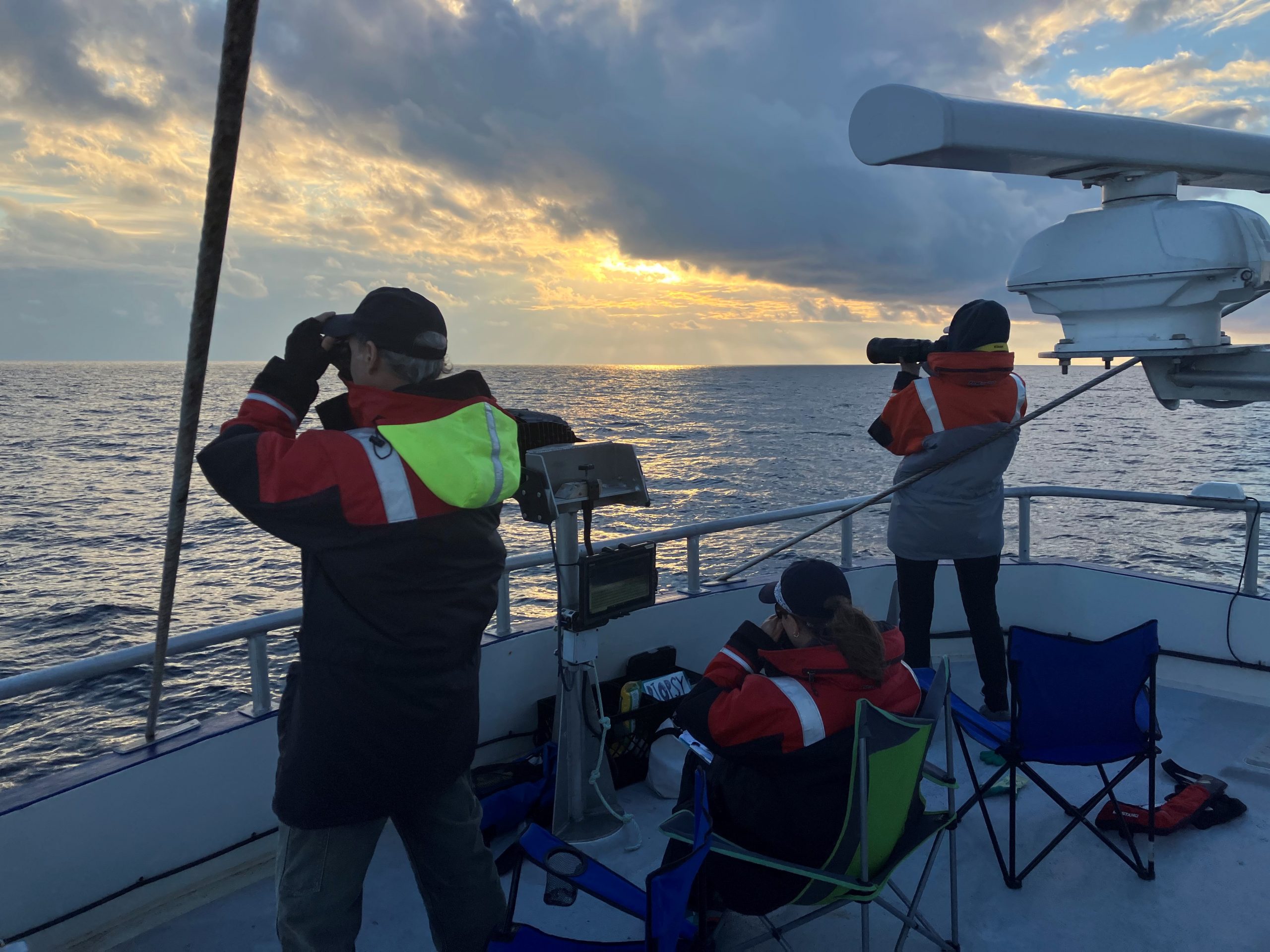
We covered lots of area where no right whales were seen—the whale density seems lower than in July. That was challenging because all of the scientific studies need to be conducted around whales. Some whales we had seen in the Shediac Valley a few days before were then seen in Bradelle Valley. The animals appear to be moving east out of the Shediac Valley.
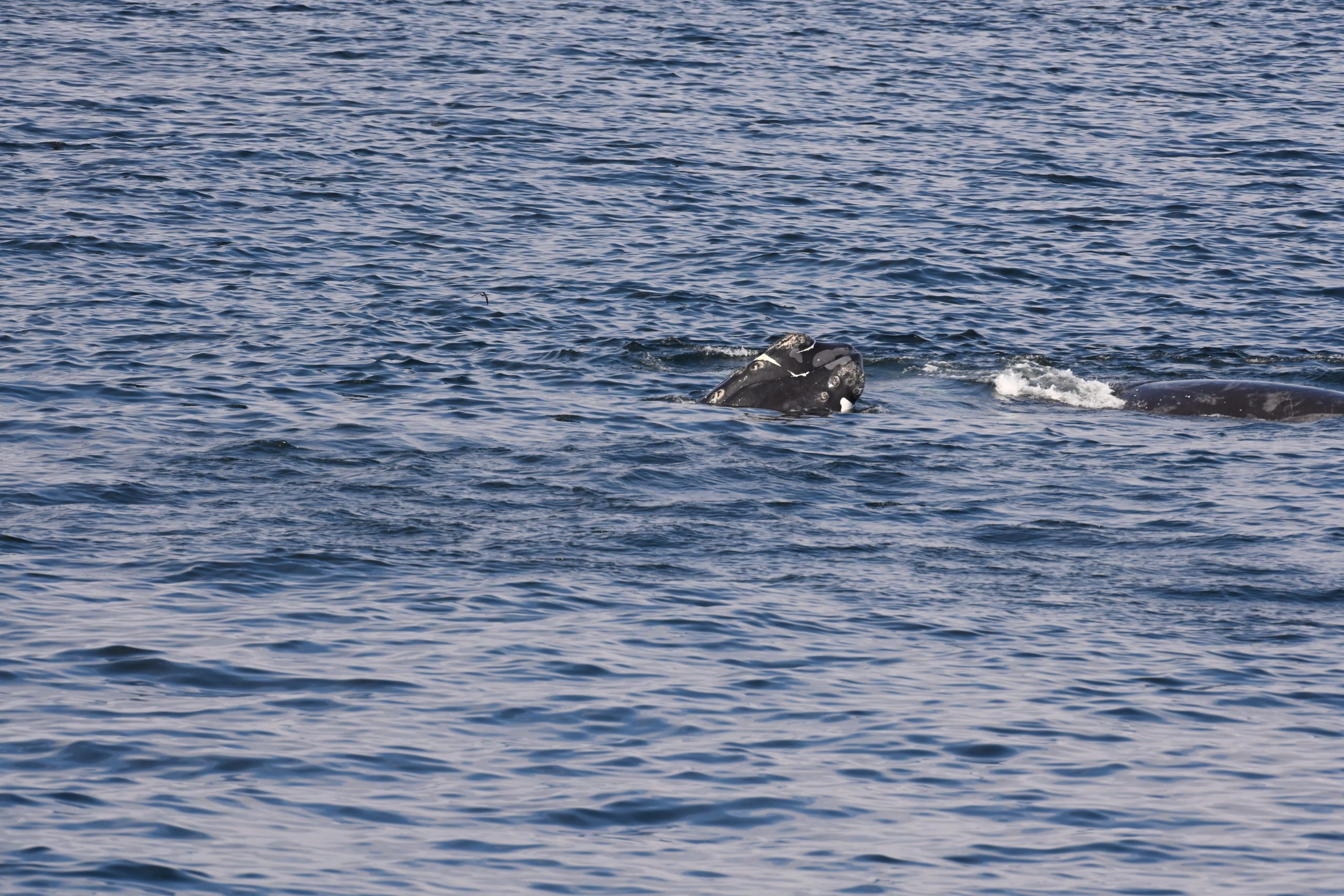
It is not uncommon for us to see adult males head pushing and making loud, percussive underwater noises (called “gunshots”) far from other whales. We found “Scarf” (Catalog #1429), a 40-year-old male, far from other whales and behaving oddly by sinking and coming close to the boat. No head pushing or “gunshots,” but he may well have done so at the end of the day after we left the area. We saw him again the next day when he joined a surface-active group (SAG) with Catalog #3720, a 15-year-old female, and another individual. Scarf has bright white scars on his head which make him easy to pick out of a crowd.
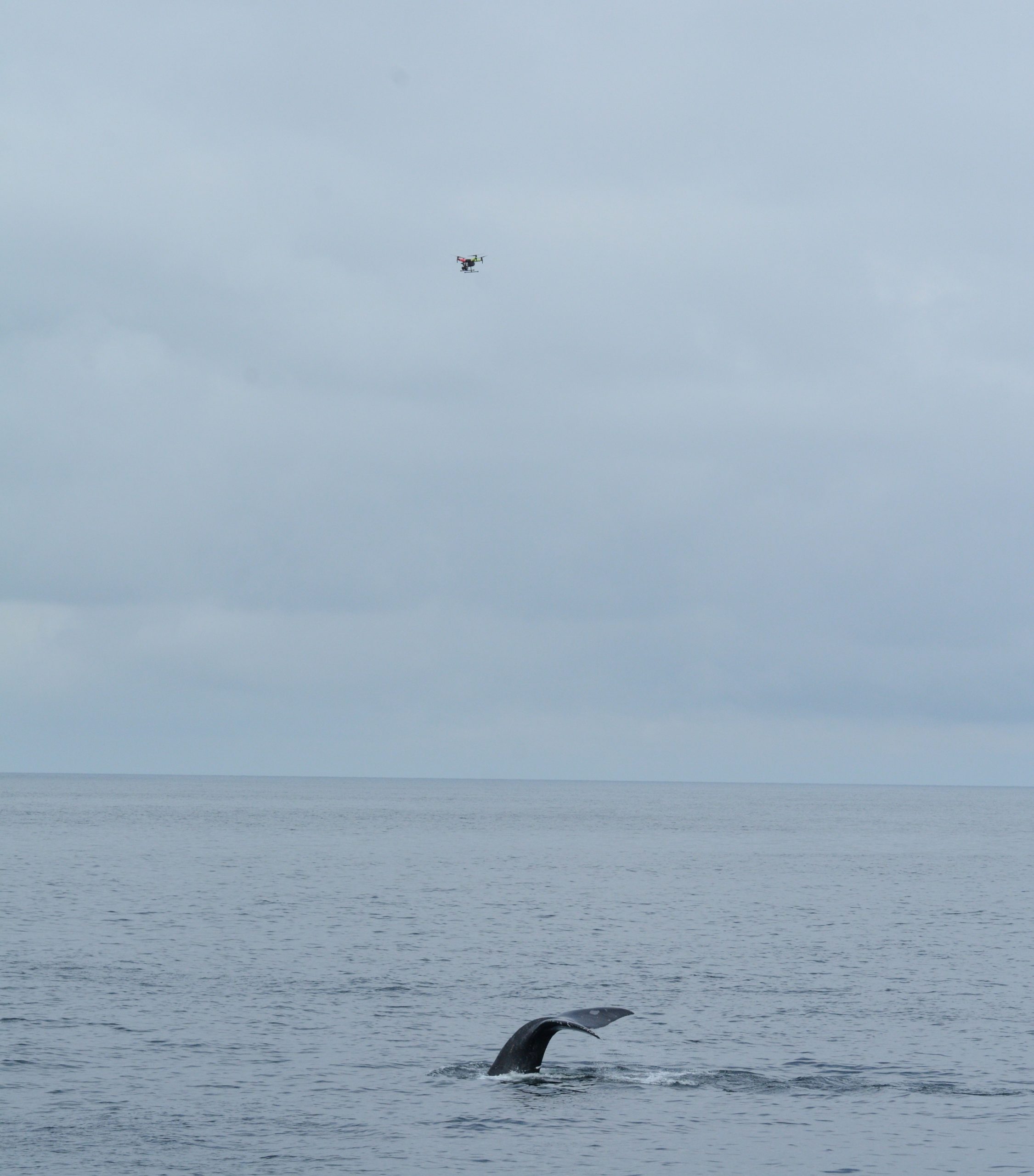
We had four survey days in a row this trip, even though the original weather forecast made it seem like we might be lucky to get one day! This is very exciting for us as researchers, though it is tiring to work four days in a row when they are 14-hour days plus night watches, which are typically two hours at a time. After a day at the dock to wait out some high winds and seas, we are looking forward to a few more days on the water before we conclude our August cruises.
/
Cruise 2: August, Part 1
Updated September 2, 2022
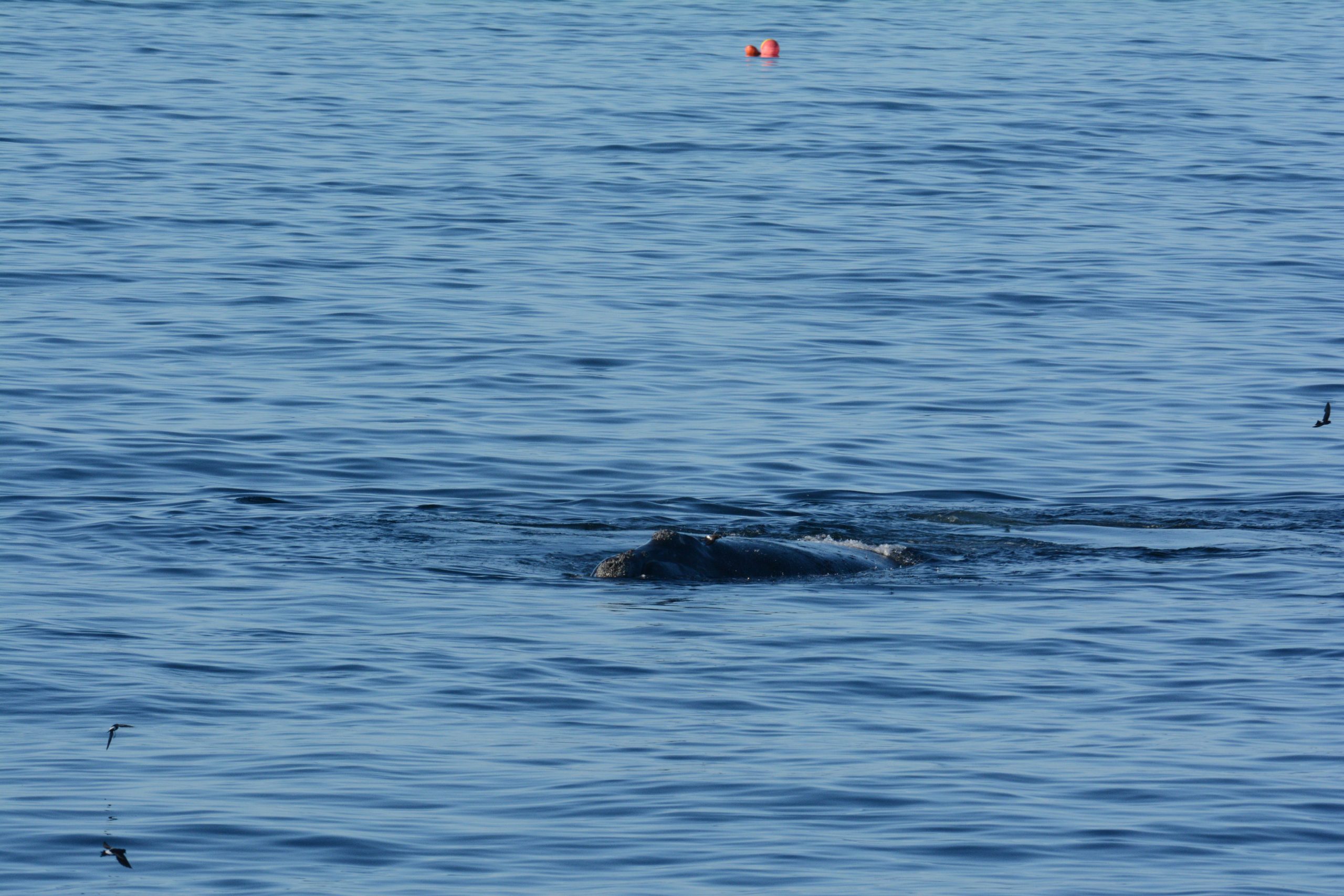
After a long day of driving north and another day of equipment prep and safety review with the crew, we were very excited to head out for our first day of surveying in the Gulf of St Lawrence. We steamed out to the Shediac Valley overnight and began to survey shortly after daybreak. Within the first two hours, we came across numerous right whales, including “Slalom” (Catalog #1245) and her 2022 calf. The calf was swimming and rolling near some buoys attached to lost crab gear, which made all of us nervous that the calf, or another right whale, could become entangled in the lines. Fortunately, our captain is authorized to remove lost fishing gear from the water, so after photographing the right whales in the area, we paused our survey to haul the crab trap on deck so it could be returned to the DFO authorities. We continued to survey through the rest of the day until the winds got too high, then the vessel made its way back to port to wait for fairer seas.
Cruise 1: July
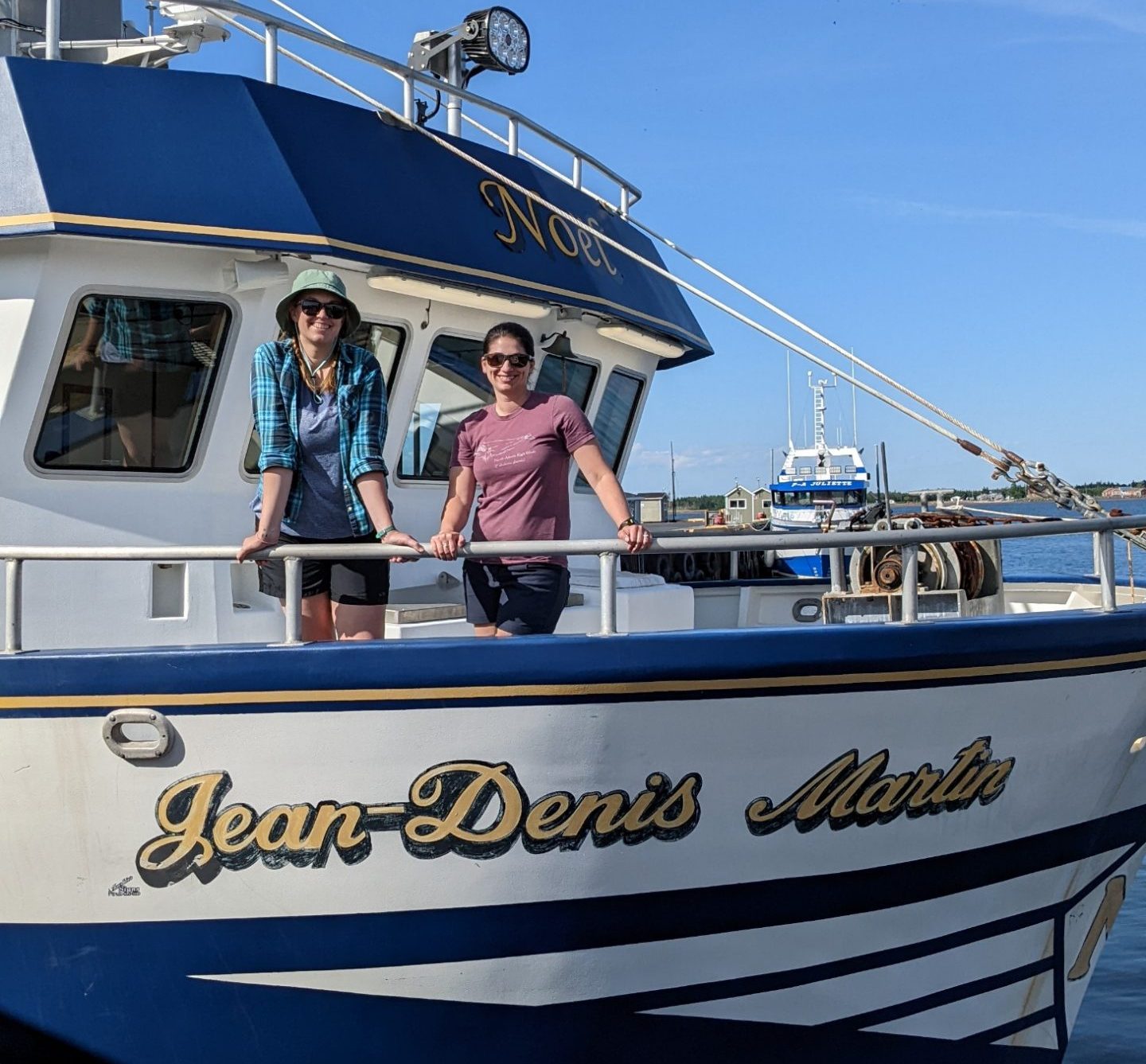
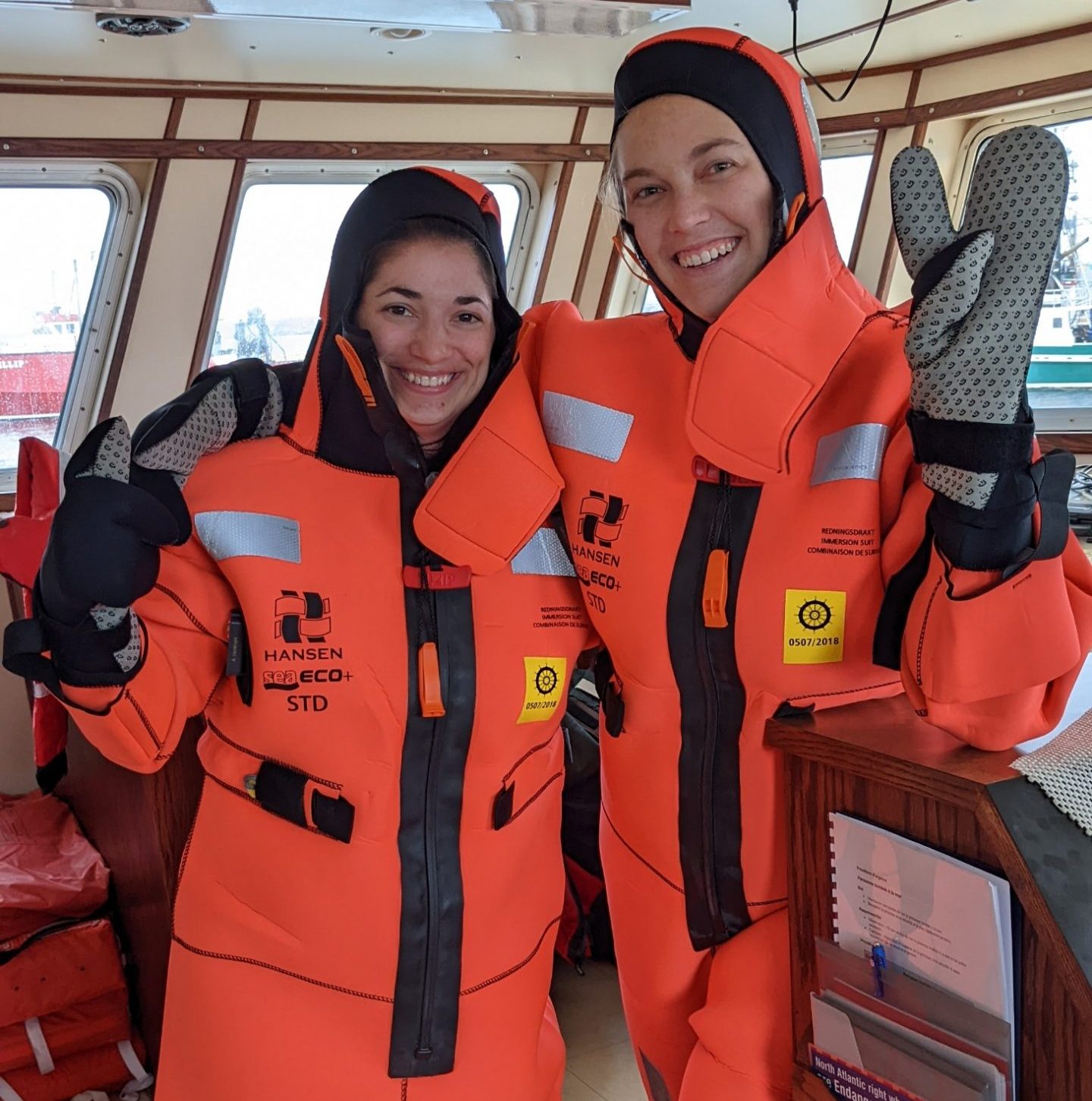
Two researchers from our right whale team (Kelsey + Amy!) were in Canada at sea aboard the vessel Jean-Denis Martin in July. Their research examined all aspects of this incredibly important right whale habitat, including photo identifications, health and behavioral assessments, biopsy and fecal sampling, plankton and oceanographic sampling, and drone imagery.
Check out updates from their July cruise below!
Small Boat Cruise
Updated August 3, 2022
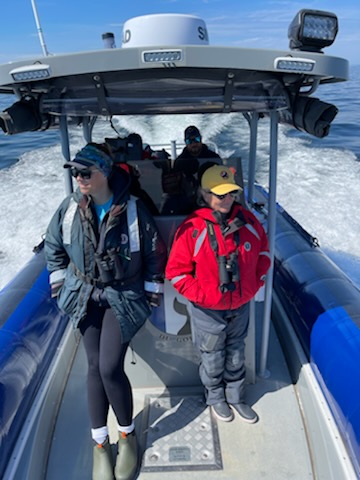
For the two weeks between the larger Jean-Denis Martin (JDM) cruises, a few of us from the New England Aquarium and the Canadian Whale Institute (CWI) have joined forces on a small boat to continue right whale-targeted surveys in the Gulf of St. Lawrence, with a focus on gathering more biopsy samples (skin and blubber). The boat we use for surveys is a 30-foot rigid-hull inflatable, affectionately nicknamed “Charlie.”
There are pros and cons to using a smaller boat. Pros: You can go faster and have more maneuverability around whales. Cons: You can’t handle higher sea states, and you can’t stay out overnight. Because the majority of right whales are still aggregating farther offshore in Bradelle Valley (~80 nautical miles), as opposed to the closer Shediac Valley (~40 nautical miles), the small boat can feel limiting.
Despite these setbacks, we have been able to conduct three surveys in the Baie des Chaleurs and Shediac Valley so far. We have reported a whopping 10 sets of lost crab gear to the Canadian Department of Fisheries and Oceans (DFO) to recover. We’ve also photographed 14 individual right whales, eight of which we did not see during the previous two weeks on the JDM. Interesting!
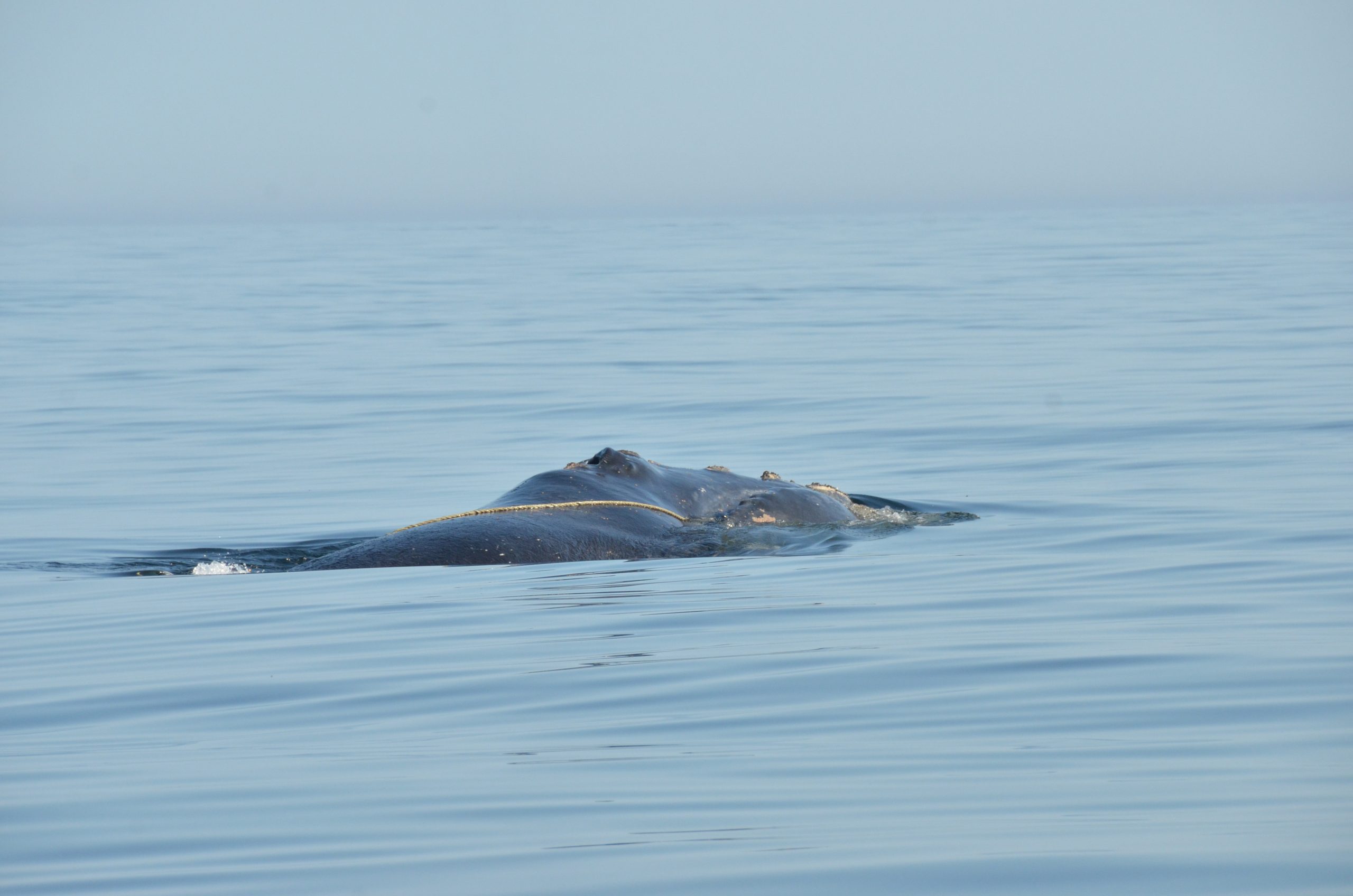
One of these “new” whales was “Snow Cone” (Catalog #3560), the well-documented 17-year-old female who made headlines over the winter for giving birth while being entangled. She was last seen with her months-old calf in Cape Cod Bay in April. When we photographed her on July 23, she was still entangled and hanging out with Catalog #4190 (an 11-year-old female). Unfortunately, we did not see her calf. Right now, we can’t say for sure what happened to Snow Cone’s calf, but researchers on and above the water will continue to keep an eye out in the hopes of seeing them together.
To learn more about Snow Cone’s plight, read our blog on her entanglement history and stay tuned for updates from the August cruise.
Previous updates
Cruise 1: July, Part 2
Updated July 27, 2022
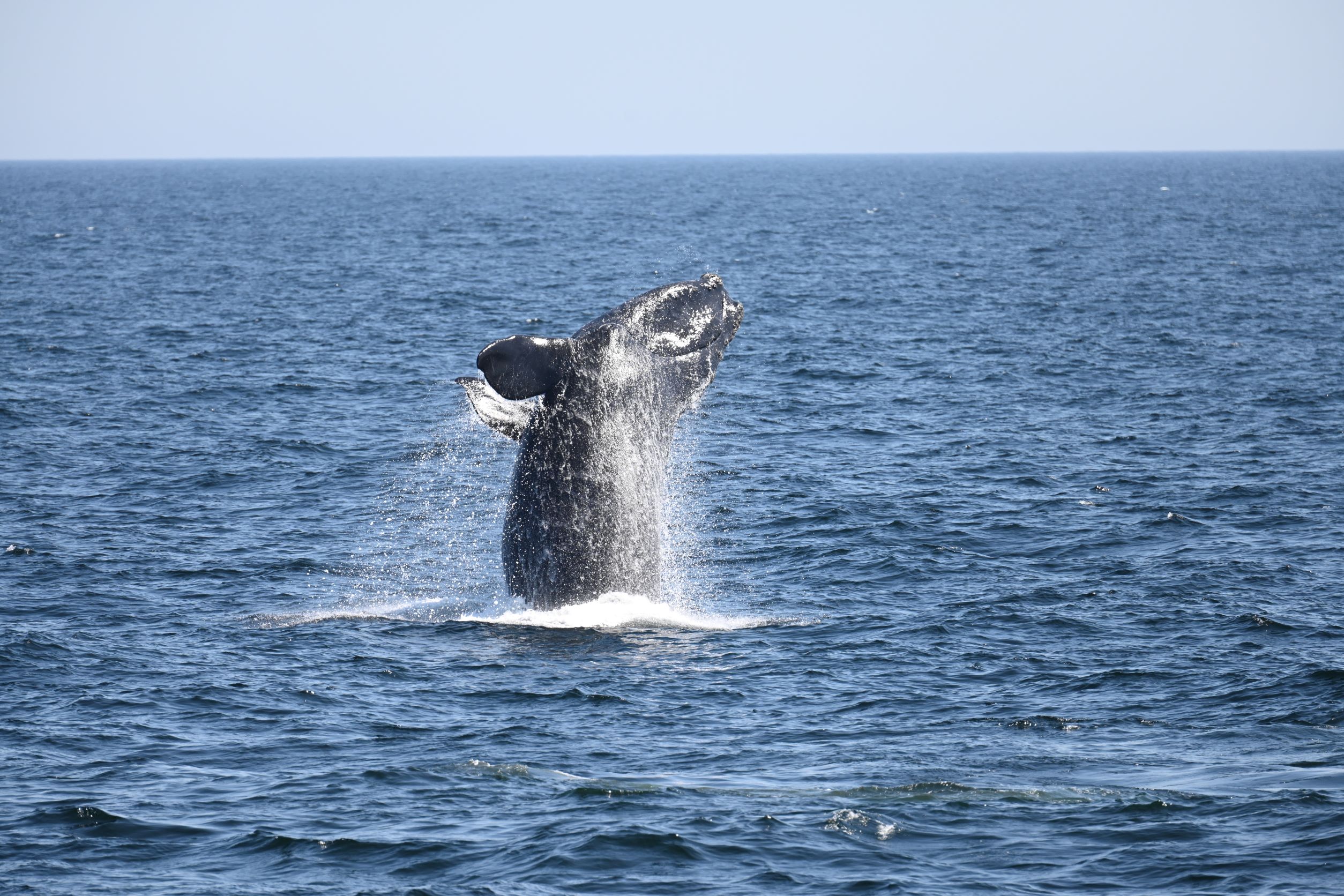
In the second half of the cruise, we logged over five days at sea–even though conditions continued to be rough. On the final day offshore, we found seven right whales near an area off of Prince Edward Island that’s closed to fishing. To our knowledge, no right whales have ever been sighted in this closed area–so it was exciting to see them here! We also spotted three mother-calf pairs during the cruise: “Silt” (Catalog #1817), “Slalom” (Catalog #1245), and Catalog #4180. Silt’s calf put on a show for everyone at sunset, breaching numerous times.
This time, we photographed 67 individual right whales and saw a lot of familiar faces, including two sponsorship whales, “Aphrodite” (Catalog #1701) and “Manta” (Catalog #1507). Our colleagues from the University of New Brunswick also conducted a handful of drone flights and did two day/night oceanographic sampling.
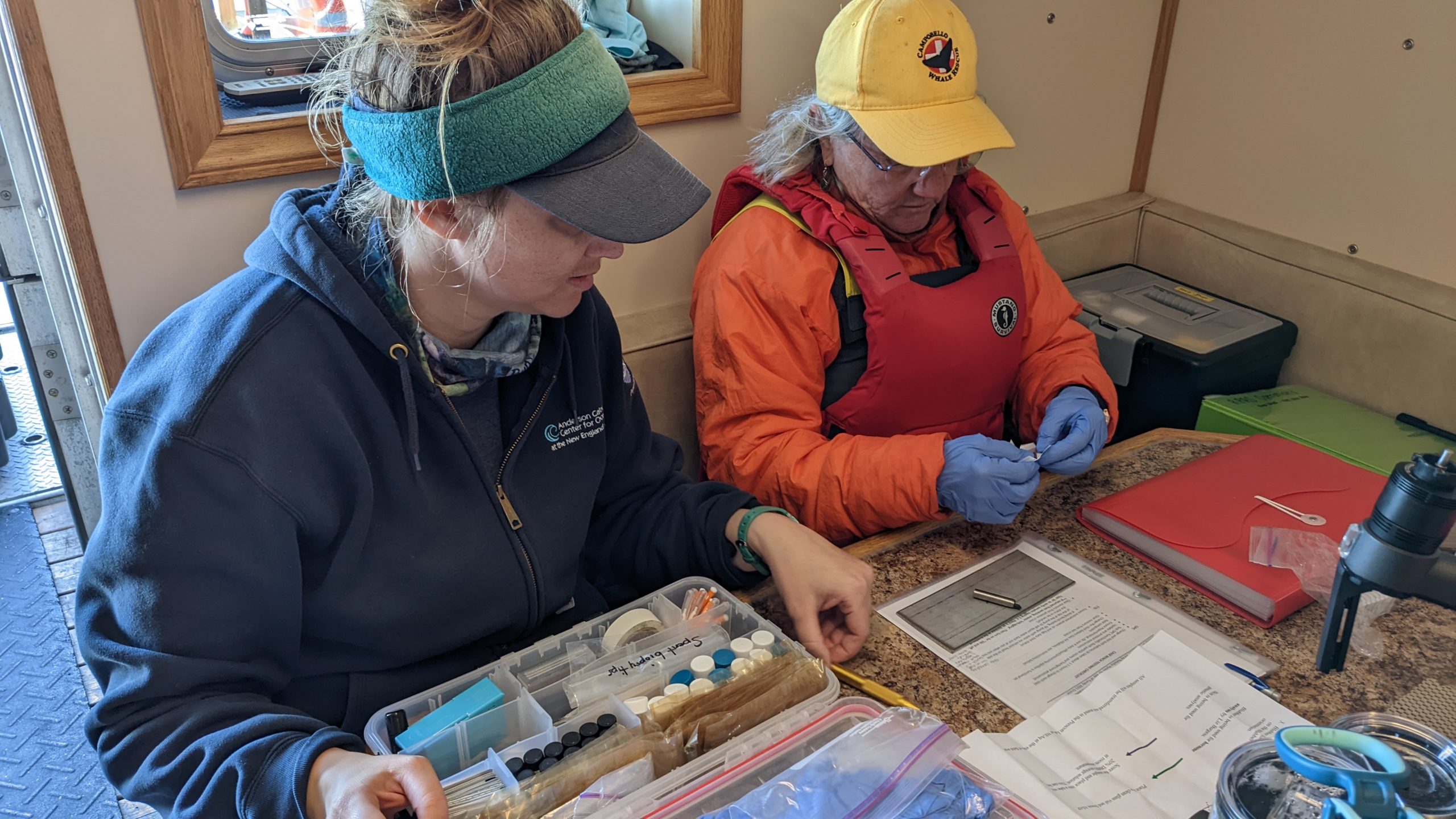
During cruises, we collect biopsy and poop samples from whales we spot better to understand the health and genetics of individual right whales. On this cruise, we collected biopsy samples from EG #3904 (Champagne, a 13-year-old female), EG #4180 (a whale that had never been biopsy sampled!) and her calf, and collected poop samples from four different whales.
Processing these samples is work that can start right on the ship. To process a skin biopsy sample, the skin is cut into small pieces and then placed in a small vial of dimethyl sulfoxide (DMSO) for storage until it makes its way to the genetics lab at St. Mary’s University.
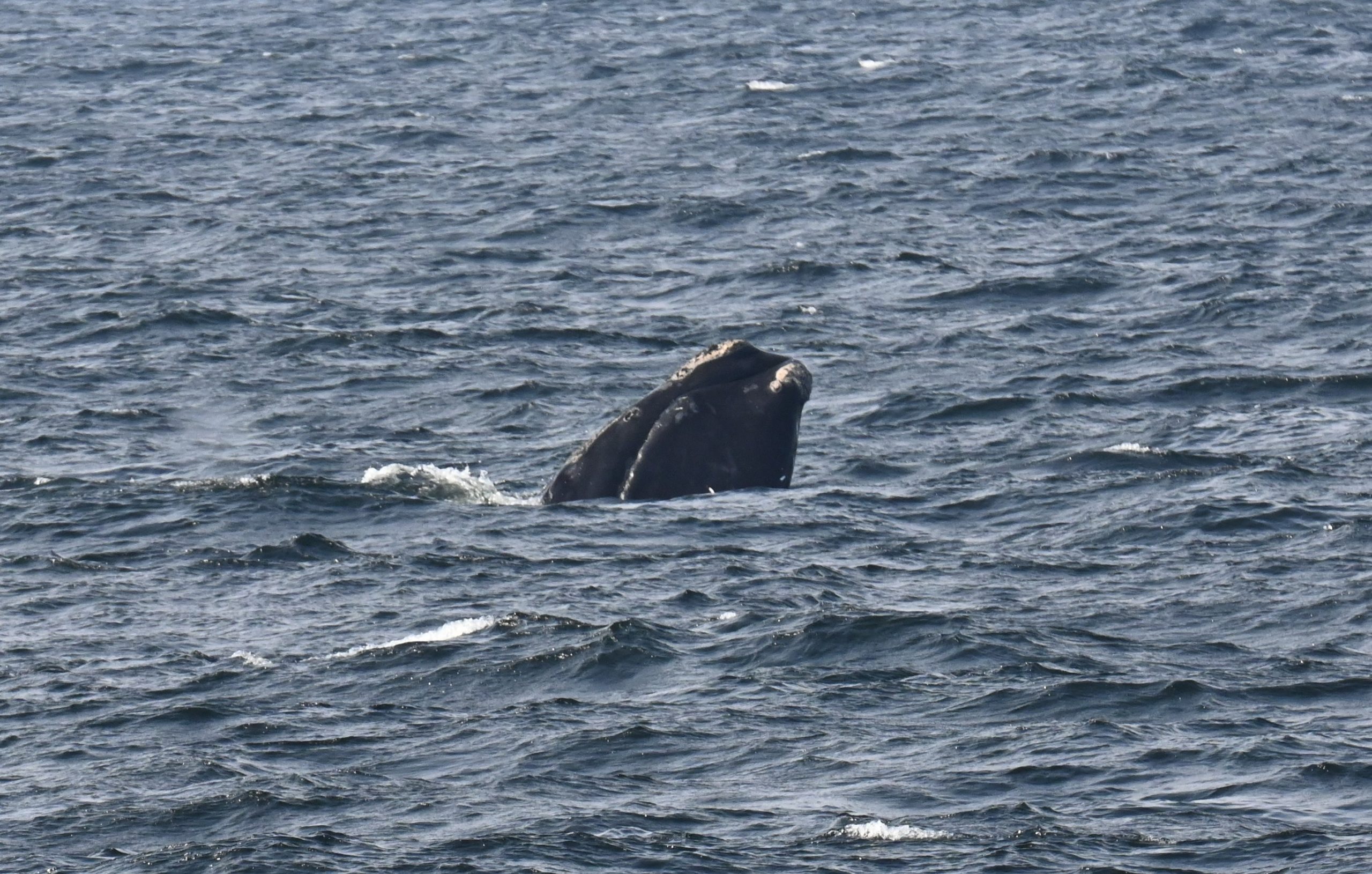
A major highlight of this cruise came on our last day at sea when we were able to (finally) biopsy sample Catalog #4180 and her 2022 calf. In rough seas, no less, thanks to Moe Brown’s (CWI) seasoned biopsy skills! This was exciting for several reasons. Firstly, the calf was one of only two calves that hadn’t been sampled in the calving grounds. And secondly, mom (Catalog #4180) has been a major genetic mystery to us. She first showed up in 2010 as a juvenile, age unknown. We only learned she was female in 2019 when she was seen with a calf. After evading sampling for 12 years, we finally got a skin sample from her. With a small piece of skin, we can learn a lot about her genetics, including who her mother is, which in turn will help us deduce her age.
Overall, this was a successful cruise! Stay tuned for updates on some of the small boat work that’ll take place before the next cruise of the season.
Cruise 1: July, Part 1
Updated July 20, 2022
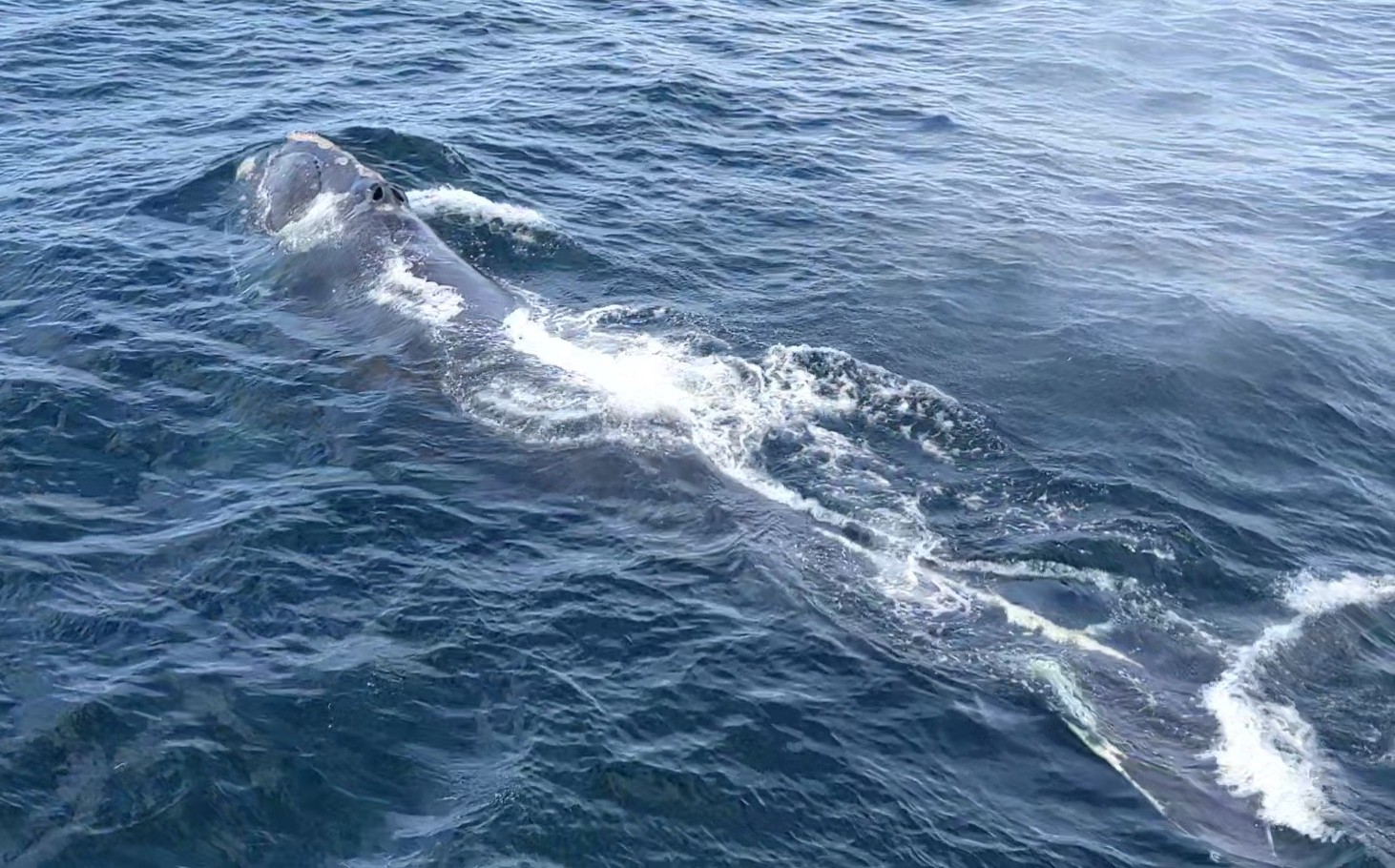
After a couple of days of prep at the dock, we were ready for the first cruise! We headed offshore for three days in search of right whales, which Department of Fisheries and Oceans (DFO) aerial survey teams spotted hanging out in the middle of the southern Gulf of St. Lawrence. Normally at this time of year, right whales are on the western side of the Gulf—that meant a longer trip, and unfortunately, the weather was not cooperative.
Even though conditions weren’t ideal, we made the most of it. We photographed 28 individual right whales; biopsy darted Catalog #3942, a 13-year-old female right whale; re-sighted and captured drone imagery of “Meridian” (Catalog #1403), a known entangled whale; and reported lost crab fishing gear to the DFO.
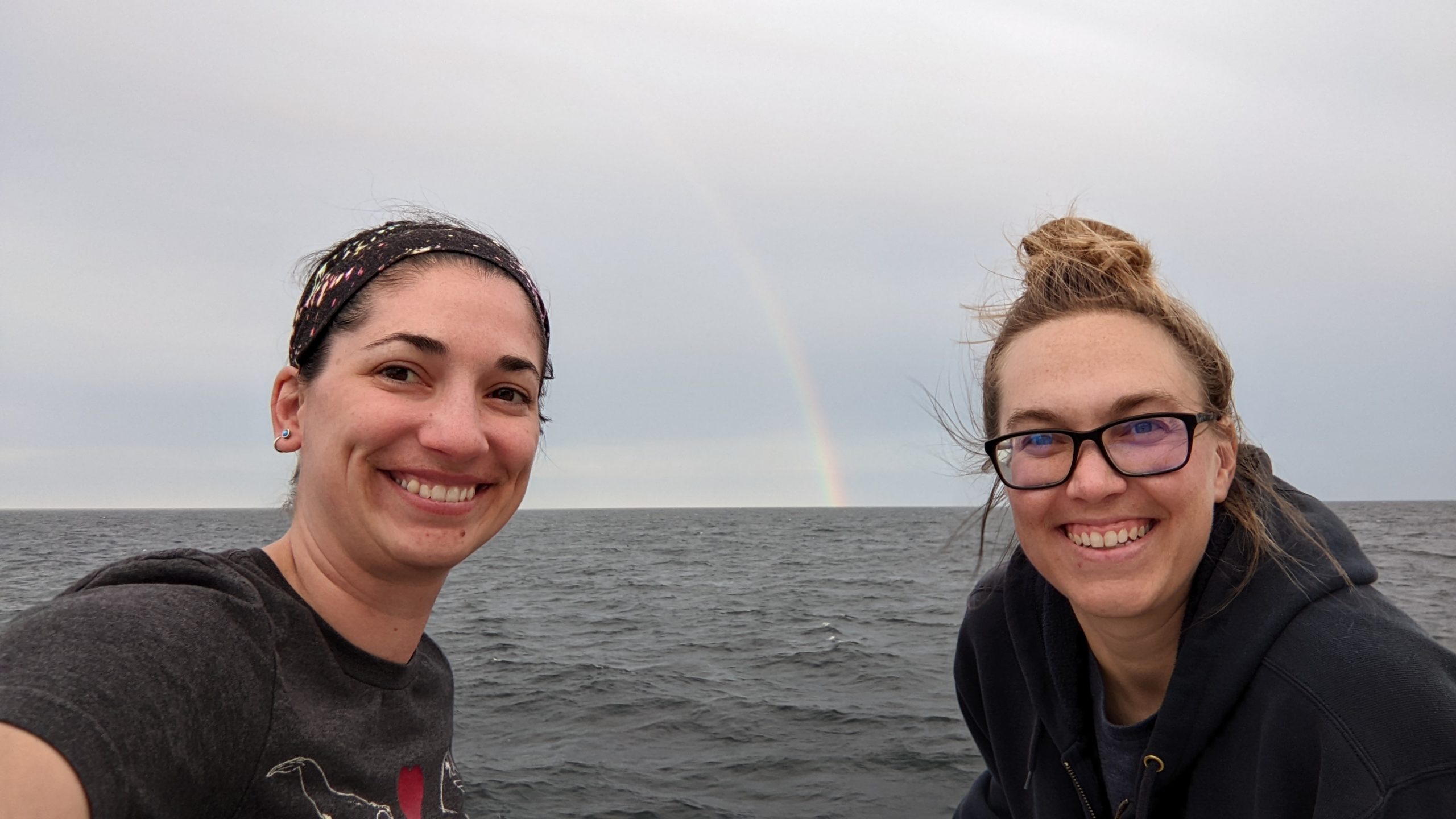
Though we had to end this cruise early because of the stormy weather, snacking on some peanut butter pretzels helped during the long ride back through rough seas. Plus, we were rewarded with one amazing rainbow.
Stay tuned for more from the right whale team’s first cruise!
This research is done in collaboration with the University of New Brunswick and the Canadian Whale Institute, and is done in partnership with the Island Foundation and Irving Oil.
All research is conducted under DFO SARA permit.

